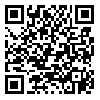BibTeX | RIS | EndNote | Medlars | ProCite | Reference Manager | RefWorks
Send citation to:
URL: http://sjsph.tums.ac.ir/article-1-128-en.html
Background and Aim: Case-Control studies provide evidence in the area of health. Validity and accuracy of such studies depend to a large extent on the similarity (similar distributions) of the case and control groups according to confounding variables. Matching is a method for controlling or eliminating the effects of important confounders. Matching using propensity score has recently been introduced to control the effect of confounders, especially when there are many of them in a study.
Materials and Methods: Matching according to propensity score was used in a genetic association study-a case-control study involving 300 subjects-to assess the effect of candidate genes on Alzheimer's disease in the Iranian population. Propensity score was calculated using STATA.8 software age, sex, education level, job and genetic background were included in the model to calculate the score.
Results: A total of 385 blood samples were taken from the participants. We managed to extract DNA in 155 of the 173 case subjects and in 161 of the 212 control subjects. The model for propensity score was statistically significant. Of the total of 316 DNA samples, 302 were matched based on their calculated propensity scores, while the individual matching method could only deliver 28 pairs.
Conclusion: The propensity-score matching method results in selection of a larger number of pairs, as compared with the conventional individual matching method. We propose to use this method, which also ensures a similar distribution of confounders between the case and control groups, particularly when there are limitations in the number of subjects available for matching.
Received: 2008/12/28 | Accepted: 2009/02/6 | Published: 2013/08/9
| Rights and permissions | |
 |
This work is licensed under a Creative Commons Attribution-NonCommercial 4.0 International License. |





